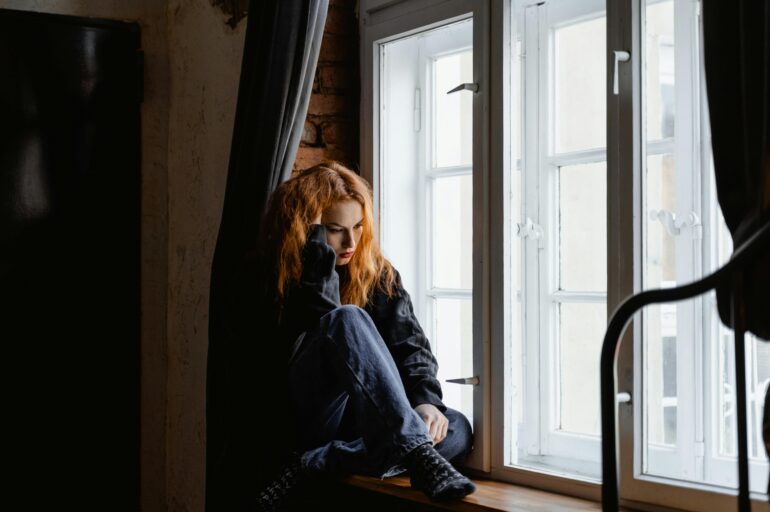We all have felt anxiety at some point. Sometimes you feel anxious symptoms when you are faced with a problem at work, for example, before taking an exam or making an important decision. Anxiety is a common response to stress. But when it gets difficult, it can affect your daily life. Nowadays, anxiety disorders are very common and disabling diseases; even women of reproductive age are more vulnerable to developing these disorders, approximately 2 or 3 times more than men.
What is anxiety?
It is a normal and healthy reaction that is activated when faced with a threat or danger. Anxiety symptoms become an anxiety disorder when this reaction is activated in usually non-threatening/dangerous situations or persistently, to the point that it significantly interferes with daily life.
Types of anxiety symptoms
Generalized anxiety disorder (GAD)
People who suffer from it worry about common problems such as health, money, work and family. But their worries are excessive and they have them almost every day for at least 6 months.
Causes and symptoms of generalized anxiety disorder
The causes are a mix between biology and the environment. Some factors may include genetics, such as brain function and chemistry, individual personality, development, and threat perception.
The main symptoms:
- Feeling of restlessness
- Being tense or upset
- Difficult to focus
- Irritability
- Being tired easily
- Headaches, muscle pain, stomach pain, or unexplained pain
- Sleeping problems
- Difficulty controlling feelings of worry
- Sweating, nausea, or diarrhea
Panic disorder
This type of disorder is twice as common in women as in men. People who suffer from it have sudden terror attacks when there is no real danger. These panic attacks can cause a feeling of unreality, fear of impending doom, or fear of losing control.
Causes and symptoms of panic disorder
It is not known exactly what causes panic disorder, but factors such as genetics, trauma, stress, having a disposition more prone to negative feelings, and changes in brain function all play a role. Some of the symptoms are the following:
- Fast heartbeat or chest pain
- Difficulty breathing
- Perspiration
- Trembling or tingling
- Feelings of doom or imminent danger
- Feeling out of control
- Chills or hot flashes
- Nausea
Phobias
Intense fear of something that represents little or no real danger. The fear can be of spiders, of flying, going to crowded places or being in social situations, known as social anxiety. Those people who suffer from phobias realize that facing that feared object or situation, or even the idea of facing them, causes a panic attack or severe anxiety.
Causes and symptoms of phobias
It is not exactly known what causes these phobias. Factors such as negative experiences, genetics, learned behavior and brain function. Some of the symptoms that can occur in people who suffer from it would be:
- A strong desire to escape, panic or fear
- Palpitations, tremors, or difficulty breathing
- Being aware that fears are irrational but feeling helpless
- In children: they may throw tantrums, cling to a trusted person or cry.
Women and Anxiety symptoms: Is it true that they suffer from it more than men?
As we mentioned at the beginning of this article, women of reproductive age are more vulnerable to developing disorders, approximately 2 or 3 times more than men . It has been shown that hormonal fluctuations in women contribute to panic episodes, where the predominant symptoms are usually respiratory, however in men they are more gastrointestinal and accompanied by intense sweating.
Panic disorder is twice as common in women as in men. The age of onset is also different, in men between 15 and 24, while in women between 35 and 44 years of age.
The anxiety disorder: agoraphobia, is one of the most disabling disorders resulting from panic disorders for those who suffer from it. When they suffer from it, they tend to lock themselves at home and not go out. It affects 3-4% of men, while once again in women it is a higher percentage, between 7 and 9%.
As for phobias, it has a prevalence in men of 5%, while in women it is 11%. Some curious data have been observed, such as that diagnosed women usually present a worsening of phobic symptoms in the premenstrual phase of the cycle. Similarly, pregnant women show an increase in levels of social anxiety in the first trimester of pregnancy.
After having seen all the previous data, we can say that women tend to suffer from anxiety more than men. In any case, if you find that you are not capable of knowing how to manage certain situations, do not hesitate to consult with a professional so that they can give you the necessary tools to deal with all of this.
At Vitae we care about your health and that is why we try to offer the best of us, providing valuable ideas for your daily life. Many times, to achieve full well-being, supplementation is necessary, and below we tell you our proposal.
Vitae solution
ReConnect It is a combination based on NADH, coenzyme Q10, serine and vitamin C that, thanks to the synergy of its components, helps improve physical and cognitive performance. It helps increase the ability to manage stress, regulates the sleep-wake cycle, reduces fatigue, improves mood, improves cognitive functions (learning ability, concentration, memory and mental agility).






